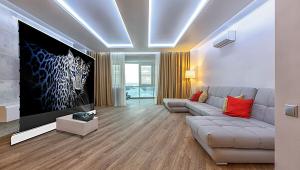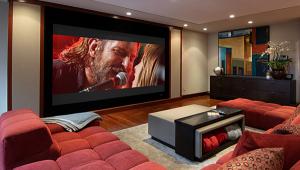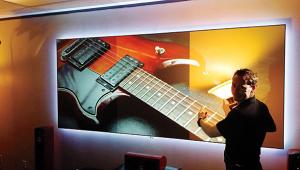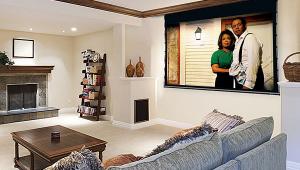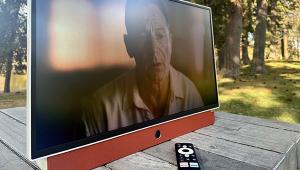The hundred inches one is really big, even for huge places. But it is beautiful!
Pizza from papa john's
Planar Xscreen
As much as I love projectors, most people feel they can’t live with one. Apparently, some people don’t like living in a completely light-controlled environment. Come on, caves are fun. Not convinced? Neither are most people. So enter a subcategory of the screen market—one that caters to those folks who want a big-screen image, without the cost of a flat panel and without the light requirements of a regular front-projection system. I wrote an article a few months ago on several screens that fit this niche. You can read that one here. Planar’s Xscreen takes a similar approach but adds a few different features.
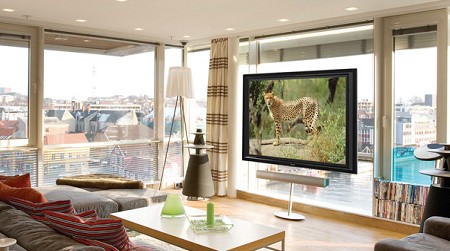
At the core of the Xscreen is a high-gain, but highly directional, silvery screen. The point of this is to reflect as much light as possible from the projector but not the ambient room light (like a regular screen).
To test this, I set up the Xscreen in our lab in front of our regular screen. Then, obviously, I projected an image on it. Just by dropping the Xscreen, I could see what the same-size image looked like on our normal 1.0-gain screen. Most readily apparent is the increase in brightness. The Xscreen was roughly three times brighter than our normal 1.0-gain screen. With the projector we were using, this resulted in around 94 foot-Lamberts versus 31 ft-L with the 1.0-gain screen. With the lights off, the black level was also about three times higher.
With the lights on, however, an interesting thing happened. With a white field, the brightness on the Xscreen stayed almost the same, but, on the regular screen, it came up a little less than 10 percent (which, in this case, isn’t good, as it’s just reflected room light). With a 0-IRE black field, it was far more interesting. The black field on the Xscreen was actually 20 percent darker than it was on the 1.0-gain screen. It was doing just as it was advertised: It was blocking more of the ambient light than a regular screen.
What this means is that the contrast ratio, on the 1.0-gain screen and the lights on, was a measly 57:1. On the Xscreen with the lights on, it was a far more watchable 194:1. With the lights off, this same projector measured over 8000:1, so the Xscreen can't work miracles, but it's doing quite a lot to make the image watchable in direct light.
Speaking of direct light, I shone a light directly on the screen. The same black field now measured three times higher on the Xscreen. But the 1.0-gain screen now measured a whopping nine times higher.
While watching a movie, the difference was just as noticeable as the tests indicated. The Xscreen was extremely bright, almost too bright in a dark room. This certainly won’t be a problem if you get one of the larger Xscreens. I was using the smallest, the 60-inch model. While there was definitely a difference between the image with the lights on and the lights off, it was still perfectly watchable with a light shining directly on the screen, which you can’t say for a regular screen.
This light trickery doesn’t come without some tradeoffs. For one, the extra brightness falls off when you move off axis. It’s not as severe as what you get with an LCD, but it’s there. Also, you get some silk-screen effect, or a kind of sparkle in bright parts of the image. This is typical of most high-gain screens. RPTVs and some regular front-projection screens have this, as well.
If you want to be able to watch your projector during the day and not black-wrap your living room, the Xscreen is definitely worth checking out. It’s a lot cheaper than a 100-inch plasma.
60-inch Xscreen $ 1,399
70-inch Xscreen $ 1,699
80-inch Xscreen $ 1,999
100-inch Xscreen $ 2,799
Xscreen Plus
In addition to the regular Xscreen, there is also the Xscreen Plus, which you can add as a package to any Xscreen. This adds a switcher/scaler to the standard Xscreen. Sound weird? Well, it is; but, for some installations, it makes a lot of sense. If you don’t have an equipment rack, you can stack your gear under or near the screen and wire everything up to it. Then you only have to run one cable to the projector. The scaler is from Pixelworks. We didn’t have the Xscreen Plus in for testing, but Pixelworks typically does a good job—better than most internal scalers.
Xscreen Plus Pack $1,299 (plus Xscreen)
- Log in or register to post comments

